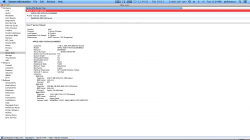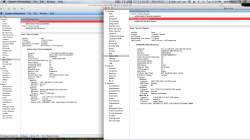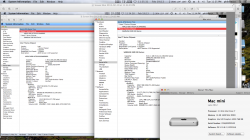OS X 10.8.3 Now Offers Fusion Drive Possibilities For Non-Fusion Drive Equipped Macs
FROM:
http://blog.macsales.com/17624-os-x...tup-option-for-non-fusion-drive-equipped-macs
Weve been waiting and waiting for Apple to release the next version of OS X Mountain Lion in hopes that the next full version would have all the necessary components to setup a Fusion drive on any Mac capable of installing a hard drive and SSD together. A little over a week ago, Apple released OS X version 10.8.3 and, with one small caveat, our hopes were fulfilled.
The Profusion Of Fusion Confusion
But before we get to showing you exactly how to setup your own DIY Fusion drive, Id like to dispel some mis-information that has been floating around the web. Up until now, most of the reports youve read about creating your own DIY Fusion drive on a machine have been incomplete. There have been many tutorials on how to create a Core Storage volume that have been labeled as how to create a Fusion drive. They are two similar, yet different drive configurations. Ive addressed a lot of this information in comments on the OWC Blog, but figure it would be a good idea to review and further explain what a Fusion drive actually is as opposed to a Core Storage volume.
When Apple introduced Lion, they added a logical volume manager (Core Storage) to the OS. The key factor to Core Storage is that it allows a single volume to span multiple physical disks. Which makes the Fusion drive possible, but it isnt the only aspect.
What turns a Core Storage drive into a Fusion drive is the introduction of automated storage tiering to mix. This has actually been around since 2005 on larger scale networks where the software moves data across different disk types and RAID levels in order to balance space, cost and performance requirements of a server. Prior to the automation software, this type of data manipulation was done manually.
Most of the terminal command setups weve seen online are only initiating that Core Storage volume. It needs the software to run the automated storage tiering to make it a true Fusion Drive. Until now, weve only seen that software component in the 2012 Mac mini and 2012 iMac models that ship with their specific builds of 10.8.2
You dont find out that its not truly Fusion until the SSD portion has been completely filled up. And even then whats on the SSD continues to be read at full SSD speed, so its only the new data writes (where existing data on SSD is not being replaced) and subsequent reads of that HDD stored data that are slower due to being on the HDD. The way a Core Storage volume works, it really makes people think theyve created a true Fusion drive. So, now that you know the difference, the question on everyones mind is





